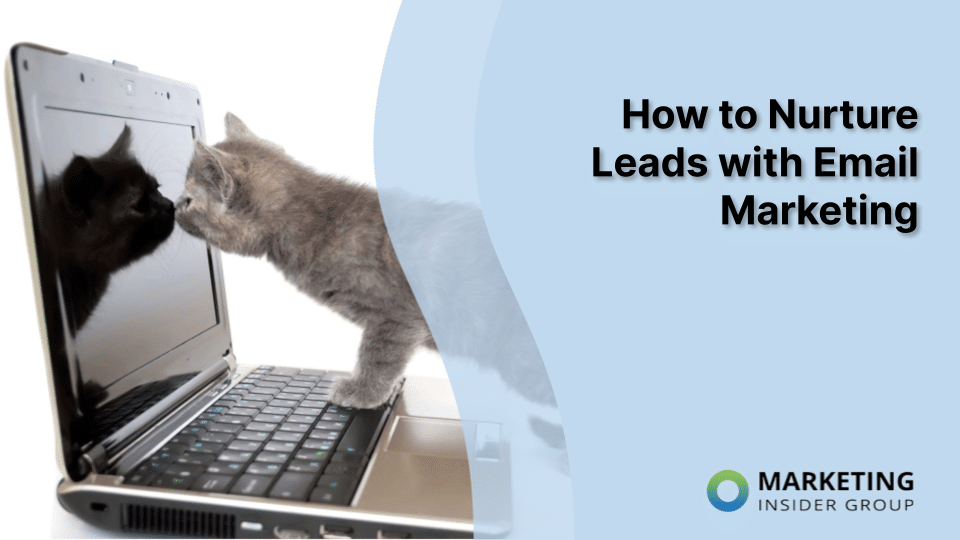
How to Nurture Leads with Email Marketing
Email marketing is very much alive. It has withstood the test of time and remains a strong force to contend with in lead generation and management, as well as customer engagement. In fact, based on statistics from Oberlo:
- By 2025, there is expected to be 4.6 billion email users. That’s more than half the population of the world.
- More than 330 billion emails are sent and received each day.
- For every $1 spent on email marketing, you can expect a $42 ROI.
- 81% of SMB’s rely on email marketing as their primary customer acquisition strategy.
This is your sign to use email as your primary channel for B2B lead nurturing. You just have to figure out how to target your leads and provide them more value than everyone else.
Know What Motivates Your Leads
It is critical to know what customers want to serve them better.
Sadly, many marketers don’t get to talk directly with the people they are sending nurturing emails too. Often, it’s inside sales, customer service agents or salespeople who are talking with potential customers live and/or in person.
Here are some ways to fix that:
- Pick up the phone and have a conversation
- Get input from your sales and business development reps before you send nurturing emails
- Survey customers and potential customers on your email list
- Get out in the field with your sales team and meet customers face to face
In sum, treat people the way they want to be treated (not the way you want to be treated). You might be wondering: why alter “do unto others as you would have them do unto you”? Let me explain.
If we do marketing and lead nurturing the way we want, it may not matter to the person we hope to positively influence with our help. Again it’s about them, not us. Marketing (i.e. lead nurturing) isn’t something you do to people. It’s something you do for people.
Understand Where They Are in the Buyer’s Journey
The goal of lead nurturing is to maintain a relevant and consistent dialog with viable future customers, no matter where they are in the buying pipeline. It’s about relationships.
Be sure to provide different kinds of information to your prospect based on what point they are in the customer buying journey.
I found it’s helpful to notice that all customer buying cycles fit into three distinct funnel stages.
Top of the Funnel (TOFU): People at this juncture are searching for ideas, tips, and resources to help them answer questions and get ideas for problems they’re facing. At this stage, your goal is to assist and provide enough value to get a conversion and move them from anonymous visitors to known people (i.e. name, company, email, etc.)
Middle of the Funnel (MOFU): At this stage, people took some conversion step to express interest (subscribe, register, or download, etc.). You need to learn if this person and/or their company is a fit and their level of qualification. You also want to learn about their motivation. During this stage, you’ll share content to help progress them from interest towards purchase intent.
Bottom of the Funnel (BOFU): People are moving through a series micro-yeses and decisions on their journey. At this stage, you’re moving them from being lead to a sales qualified opportunity. This is where the hand-off from marketing to sales takes place and where people ultimately make the buying decision.
Map Your Messaging and Content Based on Personas
Here’s a good lead nurturing litmus test: Can people get value from the information you provide even if they don’t buy from you?
Effective lead nurturing starts with listening to customers to understand them, and then it requires identifying the key personas of your audience.
What’s their job function? What part to they play in the buying process (influencer, decision maker, information gather)?
For example, based on my experience, a decision maker is heavily involved at the very start and the very end of the B2B buying process but leaves the middle of the process up to the influencers.
You’ll need to investigate who gets involved at which point in the buying process so that you can segment your messaging. What content do your contacts need? What are the problems they’re facing?
Segment Your Lists
Email segmentation means grouping your leads by their browsing activity, demographic information, and purchase history. This data can then be used to customize your email, making them more relevant to a specific group of contacts.
When you segment your email list, you can draw different conclusions by observing leads activity in each category. This information can help influence each of your different customer personas. Your next move should then be to provide relevant content that’s valuable to each persona group.
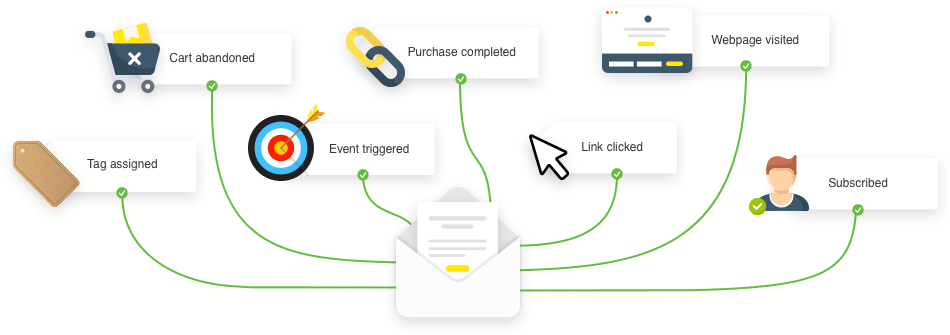
Image Source: GetResponse
You can segment your emails a few different ways. Send content specific emails by observing what section each lead views on your website. If you sell baked goods and they visit your cupcake page, you might want to send them content specific emails about your amazing cupcake services. Say they watched a video advertising your baking class. You’d focus on sending them more information about the class and its enrollment options.
Another useful idea to help tailor your emails is to use your customers’ time and location information. Have you ever noticed how emails arrive in your inbox usually at 9 or 10ish in the morning? Businesses have identified it as the best time to send out marketing emails. (P.S. think outside of the box and try sending your emails at a time other than a rounded hour, like 8:19 or 9:42.)
With marketing automation, you can use behavioral information. What content have your recipients read, links have they clicked, content downloaded, videos watched, events attended, etc.
Personally, I use smart tagging on contacts with automated workflows in my marketing automation to do this. At first, I did this manually. Before you do this, I suggest you organize all your tags in a tagging schema. I use an Excel spreadsheet, so I don’t lose track and stay consistent.
As you know more about your prospects role and the industry they’re in, you can then create messages based on industry vertical or company size.
Industry information will most likely tell what pains your prospects are experiencing at an organizational level. At the same time, company size will give you a hint as to the resources they have available to tackle these challenges. Be sure to add this information to your marketing data often so that you can easily define your target segments based on these indicators.
Personalize Your Emails
No one appreciates generic or template-style emails, that’s for sure. People want to feel like more than just another sale to your company. To stand out from all the inbox clutter from other brands, you need to get personal to attract and retain your customers.
If you want your prospects to take notice of your message, you need to do so much more than just push your content. Personalizing your emails means you know your subscribers well enough to know what they’re looking for. Be ready to give it to them at the right time and via the right channel.
Personalization has been a prevailing theme in email marketing because knowing your customers’ preferences builds a special connection between your brand and your audience. A personal touch can be especially useful if you want to get past barriers in the sales cycle. Your customers will appreciate the extra effort you’re putting in.
Ways to inject a personal touch include checking in, saying thanks, remembering special events, and thinking ahead so that your customer doesn’t have to. One of the easiest ways to do this; birthdays! Find out a subscriber’s birthday when they sign up on your website and send a simple message to show you care.
Asking the right questions can also give you good insights as to what your customers’ priorities are.
One of the most important questions to ask is why a particular customer visited your website.
If you’re an event organizer, and a lead checks out your “Party” page, they’re probably interested in getting you to organize their party for them. Of course, there are a number of other questions you should be asking to get a more holistic understanding of their needs.
Then, you can use personalized emails to direct your customers to a landing page on your website, which should have the same look and copy as your email, including CTAs. The idea is to identify your customer segments, write custom emails for each segment, and develop several landing pages for that particular segment. With this strategy, your leads will be able to recognize that you are giving them an integrated, personalized email experience and may feel more encouraged to convert as customers.
Leverage Triggered Events
In all my experience working with complex sales, I’ve not seen a someone take action or buy without a trigger event driving their motivation.
I define a trigger event happening associated with a consequence so significant that it causes new behaviors, ideas, and new sales opportunities.
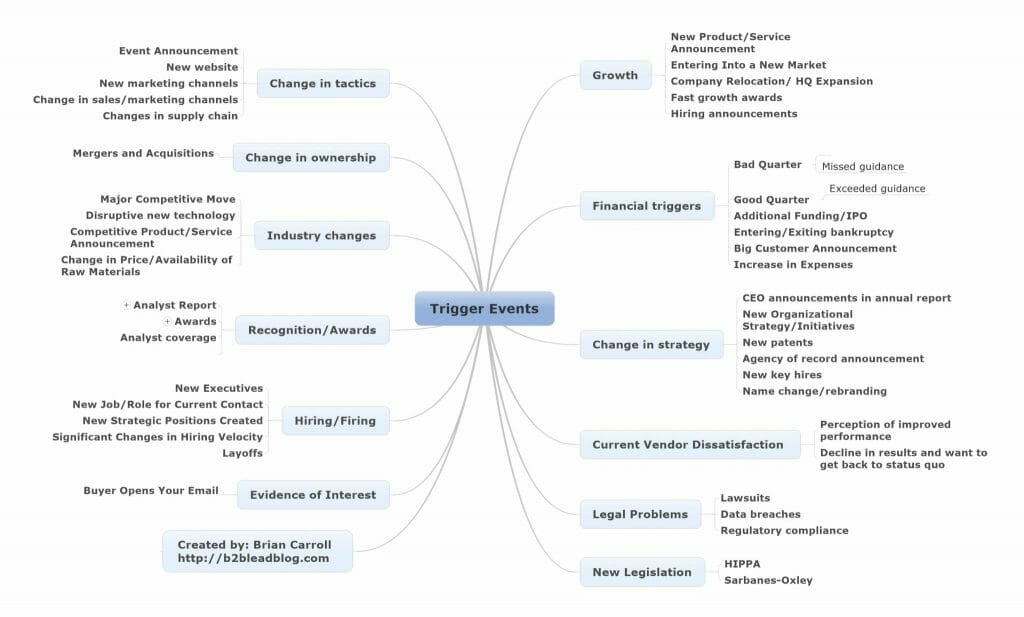
You will find specific trigger events that matter more to your audience than others because what you offer addresses different problems and emotional motivations.
Trigger events matter for two key reasons. First, they can indicate that the status quo in an organization is changing, and second, they can contribute to the development of timely and relevant sales and marketing messaging.
Automate Your Emails
Nowadays as a marketer you’re expected to generate, nurture and manage leads simultaneously. This is where email marketing automation tools can help.
Such tools are not only meant to make things easier for you, but you’ll be amazed at how they can scale things up in the personalized email department as well. The segmentation we spoke of earlier is built into many automation tools to help make even that optimization easier to accomplish.
Automation can help you take steps never thought possible before. If you’re an online shopping addict (like me) you know about abandoned cart messages. Say you sell jewelry. Your customer adds a few earring options to their cart but eventually leaves the page. They either forgot or decided against their purchase. But with email automation, you can send that customer a reminder of their cart, and even a discount code to hook them back in.
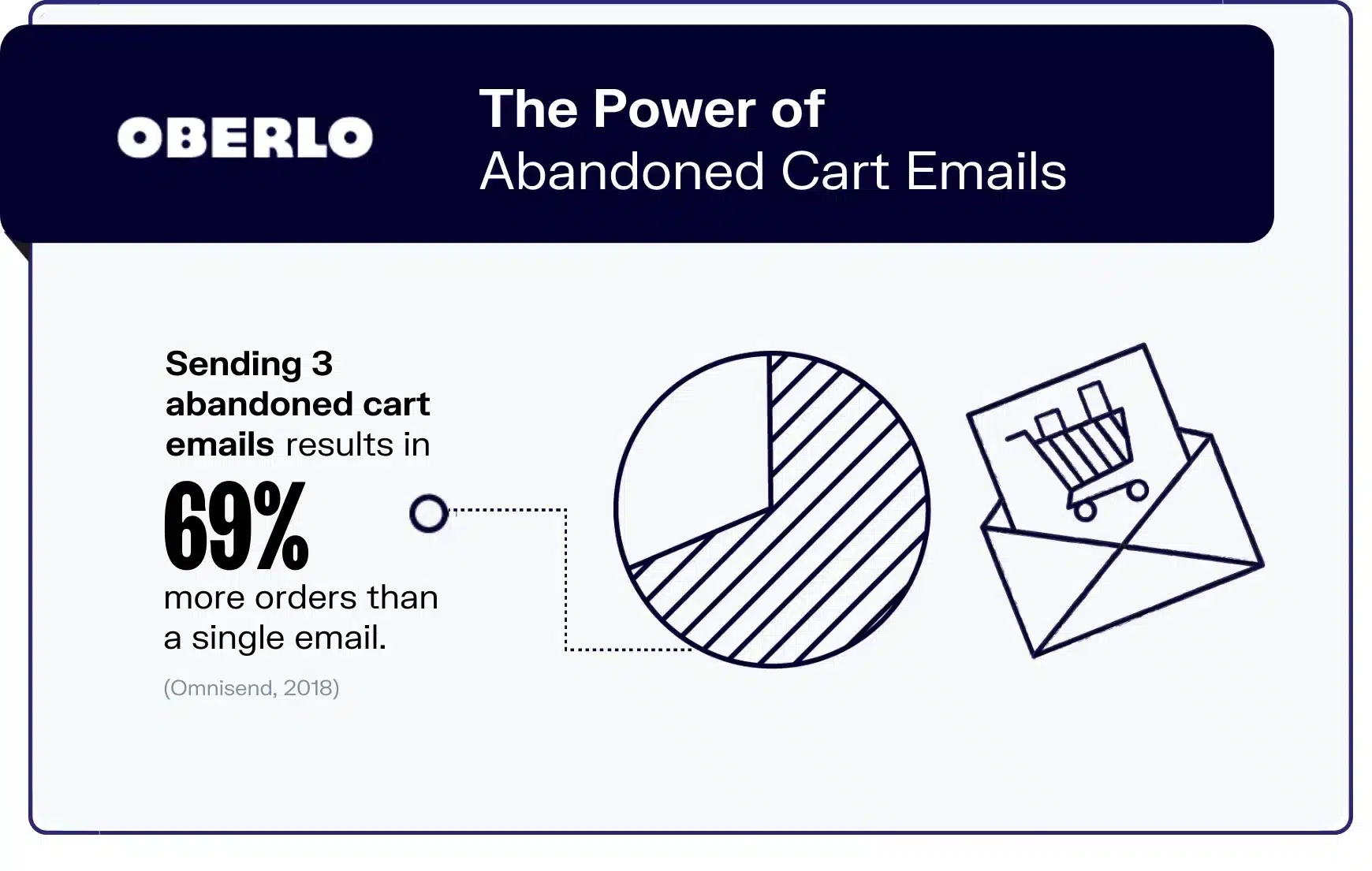
Image Source: Oberlo
These trigger emails can be used for various purposes: as a welcome greeting, for up-selling or cross-selling pitches, or to send updates about your subscriber’s account.
In Fact, Automate All Your Marketing Channels
Marketers don’t have a million hours in the day to do everything they need to successfully generate business. Marketing automation is both a challenge and an essential part of a modern business. Through marketing automation, you can sift through a huge amount of data to get to know your customers better and to use that understanding to deliver useful marketing content to them.
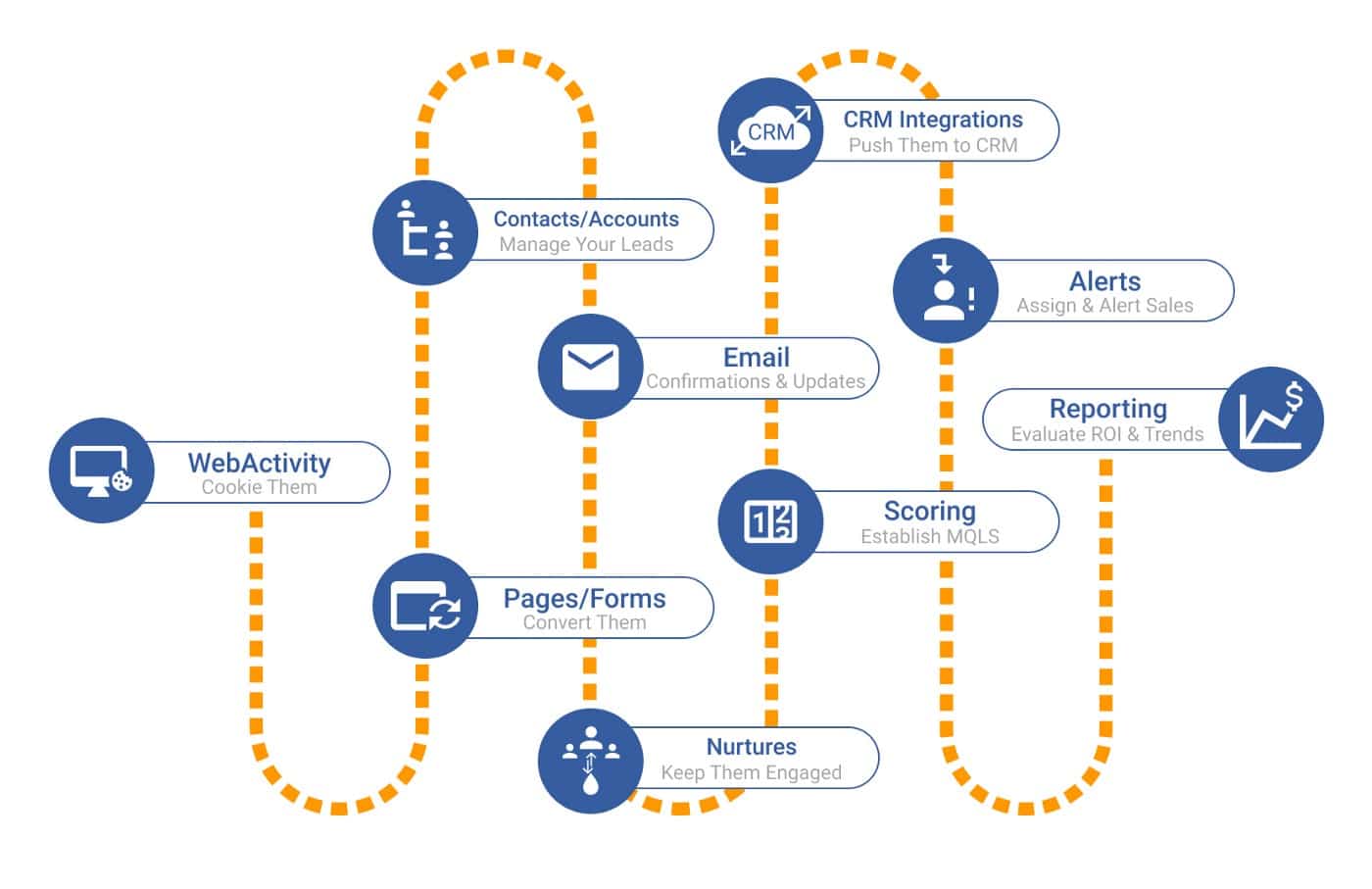
Automation is marketing technology in action. It enables you to track the digital footprints of your leads, turn those interactions into insights about the customers’ sales journey, and help you craft better content to drive prospects towards a purchase decision.
However, automated marketing does not come without its challenges. Here are some of the major obstacles facing marketers and their brands:
- Marketing automation isn’t a cure-all. It requires proper buy-in from various stakeholders including the sales and marketing departments. Marketers need to know their automation objectives, what metrics to track, and how to analyze data to provide valuable insights. They also need to know which data matters most, like using behavioral data to identify target buyers and influencers to create personas and personalize content for each.
- Marketing automation doesn’t mean hands-off marketing. You have to continuously update and test automation tools based on your observations mentioned in the above point. If you just let automation go, your messages will quickly get stale.
- Since marketers need to determine where ROI is coming from, there is a need to establish a good CRM model or system that will identify which campaigns are effective and which are not. Marketers should have a full understanding of how the marketing automation system and the CRM system work to help them predict which leads are the most qualified.
- Budget restrictions may be forcing companies to move automated marketing to the backburner. The best antidote here is to remember that marketing automation platforms have lead scoring capabilities that show which leads are better than others—saving marketers tons of time, effort, and resources as they focus more on prospects who are more likely to convert, therefore earning more money in the long run
The bottom line on marketing automation is that it allows you to scale processes without removing the ability to segment and personalize. If you need more inspiration, check out this video featuring 10 successful email marketing campaign examples.
Educate Your Leads
People care most about what serves them. If your email can teach your prospects something about their pain points, or how exactly your products or services can help your customers deal with them, you’ve got a winning marketing tool in your hands.
By crafting educational content, you are asserting your expertise and value as a brand that people can trust and depend on. It might take a lot of time and effort to sustain the distribution of this type of email, but it’s the gradual, stage-by-stage process of educating your customers and earning their trust that makes this one special.
As you nurture your leads, keep in mind that one of your goals is to help them improve their everyday lives. Of course, you should keep your content consistent with your brand’s theme. For example, if you sell vitamins and your target audience is mostly made up of health conscious individuals, you could create content about how specific vitamins reduce the risk of specific diseases.
Your emails should have a similar slant that complements their goals and shows them how they can meet their objectives in a more effective manner.
Always Offer Something Relevant
People aren’t looking for a reason to read your lead nurturing email messages, they’re looking for a reason to delete them.
Think about it.
According to a MarketingSherpa survey of email recipients, 58% of those who stop reading, disengage or unsubscribe later cite “lack of relevance” as a key factor.
For example, I get nurturing emails from companies that know me — in some cases, I’m their customer — but their emails don’t show it. Here’s the kicker: Each irrelevant message they send anchors me to ignore, delete or emotionally unsubscribe from future messages from that sender.
Sending product offers to prospects may seem like a great idea, but you need to make sure that they’re getting more than that. If someone signs up on your website, for example, it means they are ready to explore your content. Instead of sending them a free trial offer for your product or service, you might want to first find out what pages or topics engaged them, and then send additional content that they might find valuable. As they consume more of your content offers, you can leverage the trust that you’ve established to deliver more brand or product-centric content, driving them towards a purchase.
Make Meaningful Conversation
The goal of any email marketing campaign should be to open a dialogue and create meaningful conversations between a brand and its audience. The closer you can get to your customer, the more engagement you can expect in return.
Be sure to give your customers the option of choosing other possible means of connecting with you. It may be via subscription to your newsletter, connecting on social media, or alerts to product development updates. Whatever the case, let the prospect choose the channel that suits them best.
Humanize Your Approach with Empathy
Have you ever thought it’s funny when we put on our marketing and sales hats or walk into our offices how we can talk and write differently.
Here’s what I mean. Do your marketing emails treat people like objects to convert i.e. get a click etc.? Or do they treat them like people you can help? The best marketing feels like helping (because it is.)
Humanize your emails, build a connection, and continually offer value. It’s amazing the difference doing this can make. Also, check the tone of your email messages. Do you use a sales tone or an empathetic tone?
For example, the following an A/B test from MarketingExperiments of a lead nurturing email that was sent to prospects who began a form completion but did not complete it. Note the difference in tone.
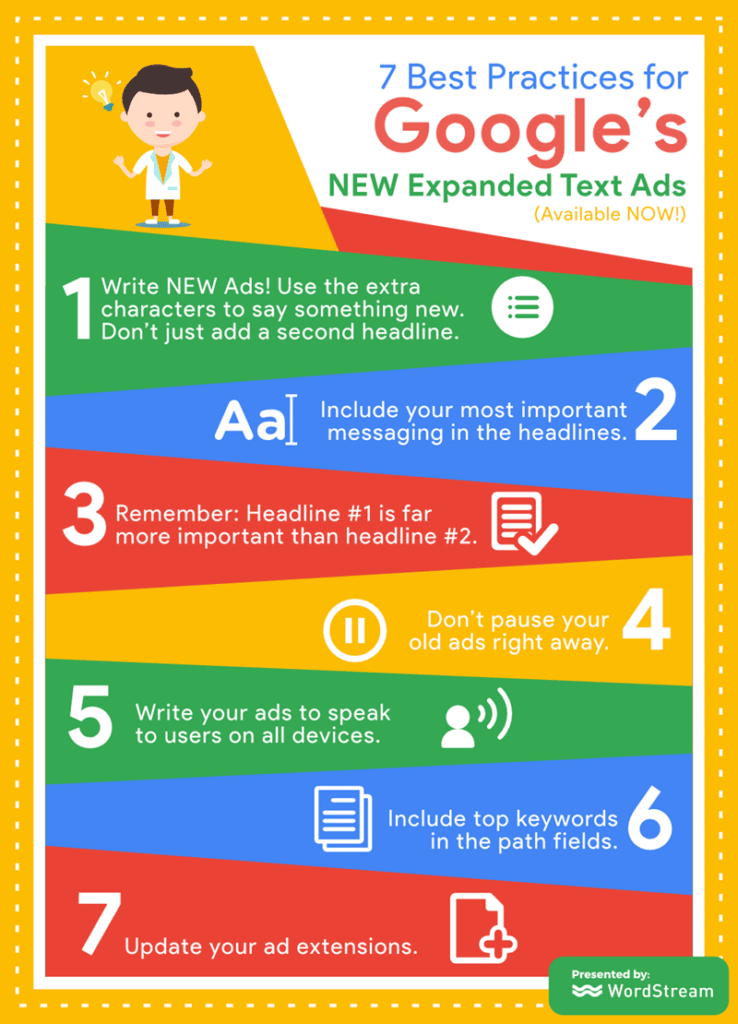
The email on the left was “sales speak.” The tone of the email on the right was changed to be more empathetic and yielded a conversion rate of 7% versus 1.5% for the control email. By addressing the customer’s anxiety (with empathy) through the tone of the email, they saw a 349% increase in total lead inquiries.
Recreate Opportunities
You can’t expect things to always be rosy with your email marketing efforts. At one point or another, you will come across subscribers that aren’t responsive or those that just don’t click through.
To turn this around, you could request your subscribers to provide feedback regarding the emails you send in terms of frequency, content type, and quality, or anything about their experience with your brand or service. Whether or not you receive the feedback you were hoping to get, you’ll still be able to use these insights to address any areas of concern.
Test and Optimize
This is the hardest part to get right. Why?
You do not just need to know how to test. You need to know what to test.
Try some of the following test ideas with your email messages:
- Try email subject lines (this is my favorite relevancy booster — I find that the less marketing hype used, the better). Clarity matters.
- Personalize i.e. first name, company, specific interest, or pronouns you use.
- Tone of the email: empathetic vs. sales speak
- Differentiate message copy (length and content)
- Template style and design (graphics vs. simple Outlook looking emails)
- Test call to action
- Naked links vs. embedded links
- Timing (how frequently you email)
The response to your A/B tests will help you understand which message and approaches are most relevant and helpful and convert best with your audience.
Personally, I’ve doubled my email marketing results and by A/B testing. Also, I’m getting more four times as many personal replies to my nurturing emails. Also, when you do lead nurturing tracks A/B testing is extremely useful because you can leverage what you’ve learned to reuse that optimized message again and again.
If your marketing automation doesn’t support A/B testing, start using one that does.
Final Thoughts
All the signs are telling us that email will never bow out of the marketing game. People won’t stop using email as a primary communication channel, and we continue to see how it keeps growing.
On a less serious note, here are a few stats about when people check their inboxes (via Inc):
- 70% of people check their email while watching TV
- 60% of people check their email while in bed
- 50% of people check their email while on vacation
- 42% of people check their email while on the toilet
- 18% of people check their email while driving (which we do not condone!)
People are checking their email everywhere! So don’t be afraid to ramp up your email marketing efforts when it comes to lead nurturing because chances are, you’ll be pretty happy with the ROI if you’re doing it right.
So I shared several tips you can use to improve your marketing and nurturing emails to boost relevancy, engagement, conversion and ultimately results. But if you do one thing from this list, do this: Put yourself in the shoes of the recipient of your email. If you get out of your head and imagine that you’re the potential customer receiving your message, you’ll get an immediate boost by asking: what are they thinking and what are they feeling?
Is the content creation aspect of email marketing holding you back? If you need more stuff to be sending your subscribers, it might be time to ramp up your content marketing strategy as well. We’re here to help with that.
Check out our SEO blog services or schedule a free consultation with us today!






